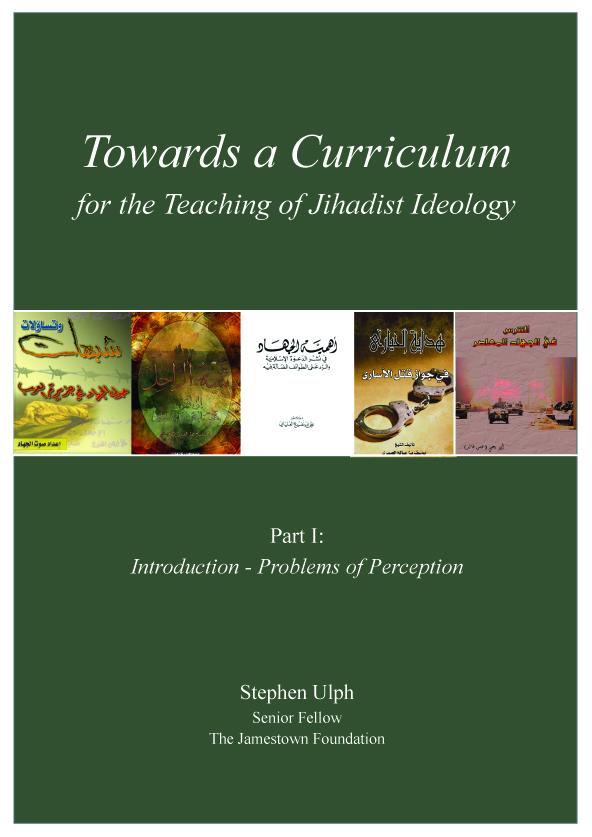Towards a Curriculum for the Teaching of Jihadist Ideology
By:

Towards a Curriculum for the Teaching of Jihadist Ideology aims to provide an introduction to the intellectual infrastructure of the jihadist phenomenon and the process of radicalization, and to furnish materials for a textbook primer to what is still largely an ideological terra incognita for the western reader. It is designed for the use of academics, security professionals, policy-makers and the general reader alike.
The work sets out in its introductory chapters to highlight common errors in the perception of jihadism and of its causes by looking at the problem from the point of view of the jihadist sympathizer. It details the ideological infrastructure of the movement through an examination of the texts – many of which have yet to be made available in English. The study argues that the meticulously composed doctrinal and cultural works form the life-blood and intellectual infrastructure of the Jihad and in quantity and range amount to an entire educational program, one that is constructed to reconfigure a Muslim’s self-image and identity.
It sets out to demonstrate how jihadism is in essence a religiously construed movement in something more than its externalities, and illustrates the emphasis the jihadist thinkers place on the importance of doctrinal propriety, an emphasis that outweighs by far the attention given to matters of strategy and tactics. The study argues that it is the strength of the intellectual underpinning (something which is too often underestimated) that affords the jihadist movement its resilience by providing it with what amounts to a doctrinal ‘safe haven’ that frames and justifies the conflict. Importantly, the work highlights that the resilience of jihadism stems from its claim to doctrinal authenticity and pedigree within the Islamic tradition. The analysis demonstrates how this authenticity derives from the jihad’s incunabulum within the absolutist, reductionist methodology of the Salafist tendency, and traces how the development to activism and Jihadi-Salafism occurred progressively, in step with constant insistence on its authenticity to the tradition. It also underlines the basic doctrinal features of jihadism, and illustrates the interpretation given by the mujāhidīn and their sympathisers to current reality, to the course of history and the salvific nature of the struggle, which they consider themselves to be waging. It is by understanding jihadists’ points of departure on their own terms like this that light can be shed on why they behave the way they do, both in the Muslim heartlands and beyond.
The ‘Curriculum’ section discusses the teaching of jihadism to date in academic institutions and outlines the problems that ensue from current reticence to give the subject the depth of treatment that it merits. As a template for the Curriculum it takes the examples of curricula and recommendations circulated by Jihadis themselves on the Internet, and thus reflects the jihadists’ own prioritization of materials and authors. In so doing, the study demonstrates the true ‘cyberweapon’ role of the web, which is as a publisher and distributor of texts. The examination of the jihadi curricula also confirms the strong doctrinal bias, indicating where for the mujāhidīn the centre of gravity of the jihad actually lies. The sample texts of the Curriculum are collected and categorized according to subject and purpose and commented upon in detail, in order to explain the world view of the jihadists and illustrate how they explain and justify their acts in religious terms using an exclusively logocentric reasoning.
Lastly, the work’s conclusions emphasize the need to avoid making assumptions based on old analytical habits, to study the wealth of open source information available on the ideology – which should be taken seriously and at face value – and to understand that the ‘Jihad’ is primarily a re-education endeavour and therefore very much a war of ideas. It calls for the improvement of both the quality and spectrum of research and analysis, preferably through a multi-disciplinary approach that can accommodate the return of the religious dimension to international affairs.





